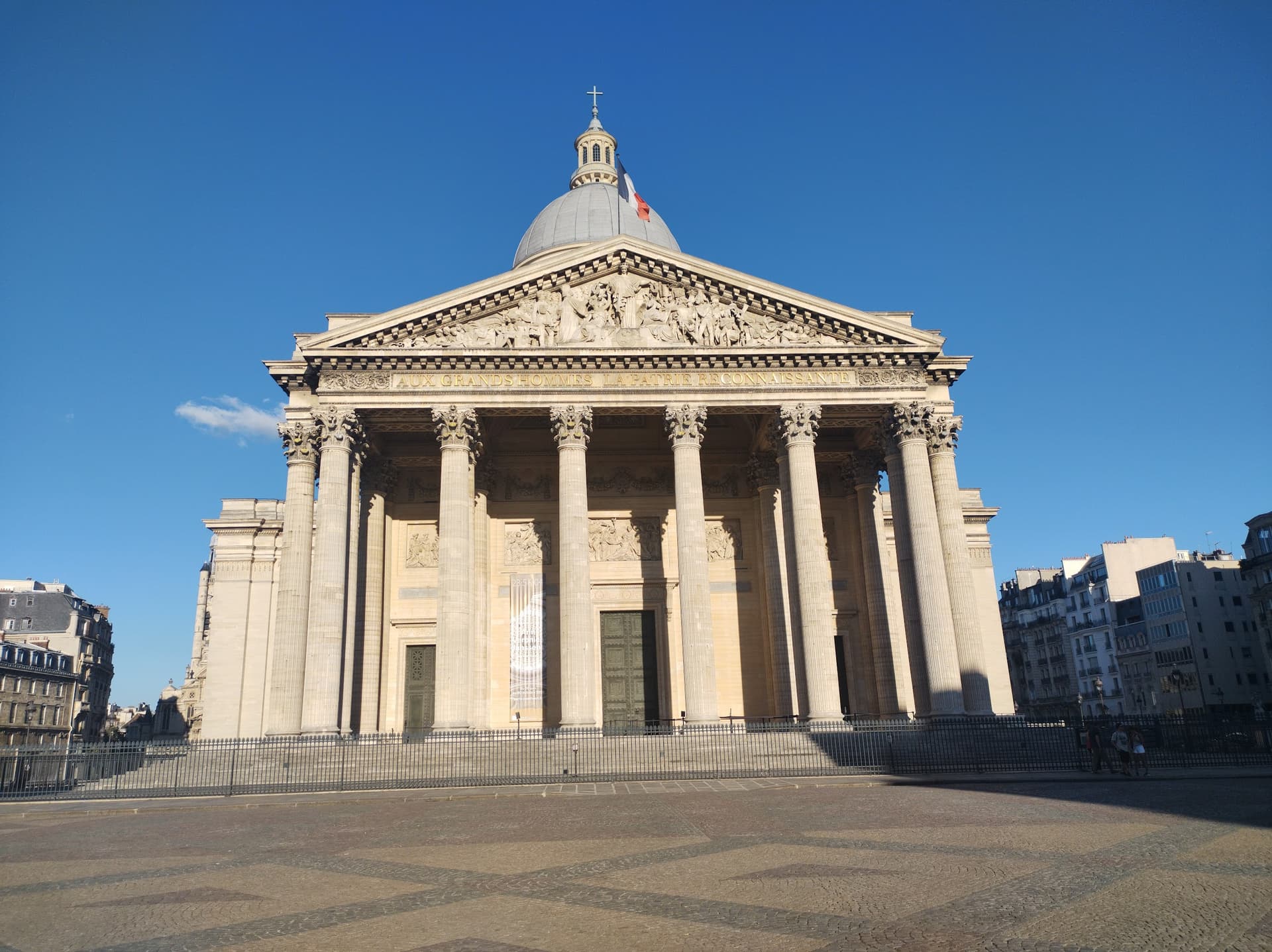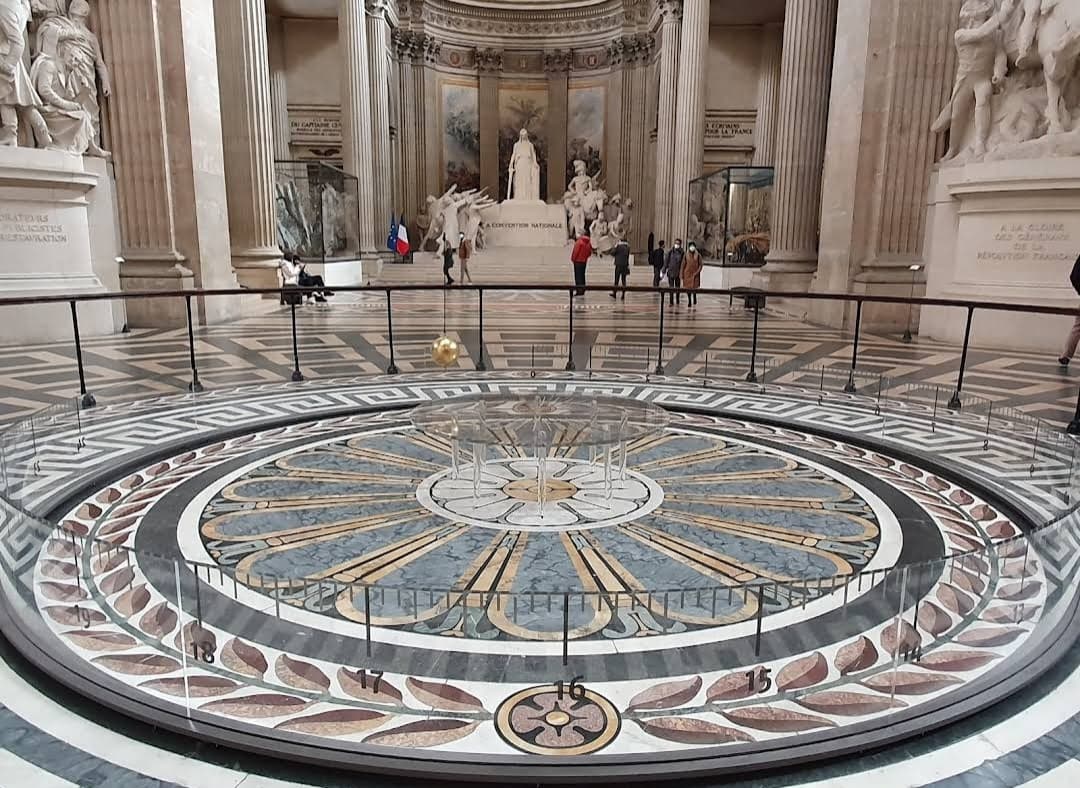Audio GuidePanthéon
18th-century mausoleum with colonnaded facade, housing remains of notable French citizens.
In the centre of Paris’s Latin Quarter stands the Panthéon, a striking monument crowning the hill of Sainte-Geneviève. Its impressive neoclassical form captivates from the outset: imposing Corinthian columns rise up to a grand portico, while an immense domed roof towers above, calling to mind the illustrious temples of ancient Rome. This remarkable structure was commissioned by King Louis the Fifteenth in the mid-eighteenth century. After recovering from a grave illness, he pledged to dedicate a church to Saint Genevieve, the city’s patron saint, as an act of thanksgiving. Curiously, though the king survived, his beloved mistress did not.
Work on the Panthéon began in the seventeen-fifties. Its architect, Jacques-Germain Soufflot, blended Greek columns with Baroque flourishes, soaring Gothic proportions, and Romanesque domes. Yet the finished building embodies a distinctly neoclassical spirit. By the time construction was completed, France had been transformed. Revolution gripped the nation, the Bourbon monarchy was swept away, and instead of a church, the Panthéon became a temple honouring the country’s illustrious citizens—the words “to great men” are inscribed above the entrance.
The crypt below houses the remains of France’s most celebrated figures: Voltaire, philosopher of the Enlightenment; Jean-Jacques Rousseau, visionary writer; Victor Hugo, who gave a voice to the soul of Paris; Émile Zola, tireless advocate for justice; Marie Curie, the groundbreaking scientist; and Alexandre Dumas, famed author of The Three Musketeers, whose place was secured after a lengthy dispute.
Suspended from the soaring dome is a quietly mesmerising Foucault Pendulum, echoing the nineteenth-century experiment that first revealed the Earth’s rotation.
These days, visitors willing to climb the many steps to the cupola are rewarded with one of Paris’s most remarkable panoramas. Only a select few stand high above the rooftops at any given moment—a peaceful, little-known lookout. To this day, the Panthéon remains a symbol of national pride and intellectual achievement, the resting place for those whose lives have helped to shape the story of France.



